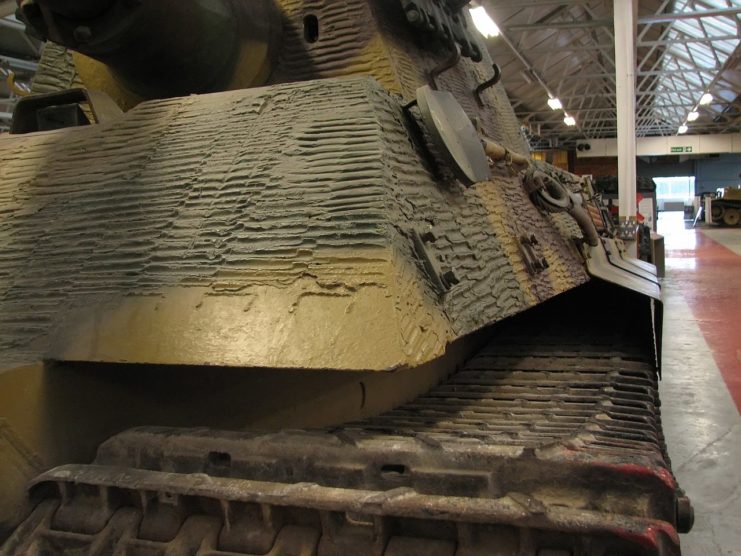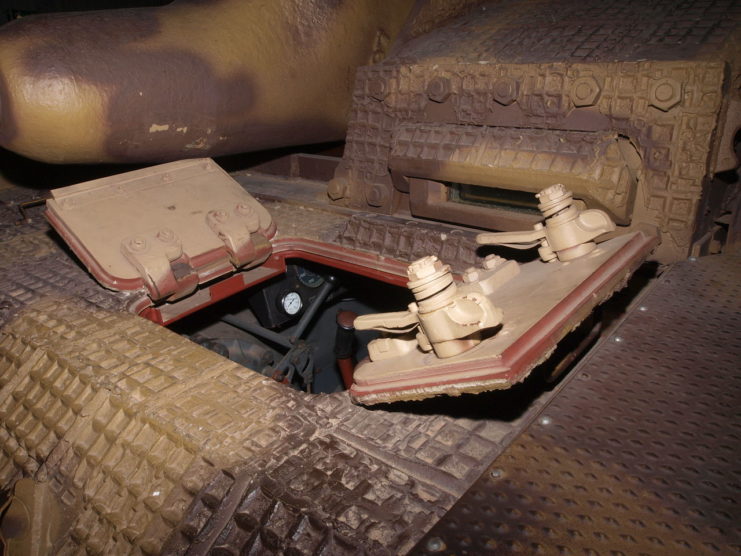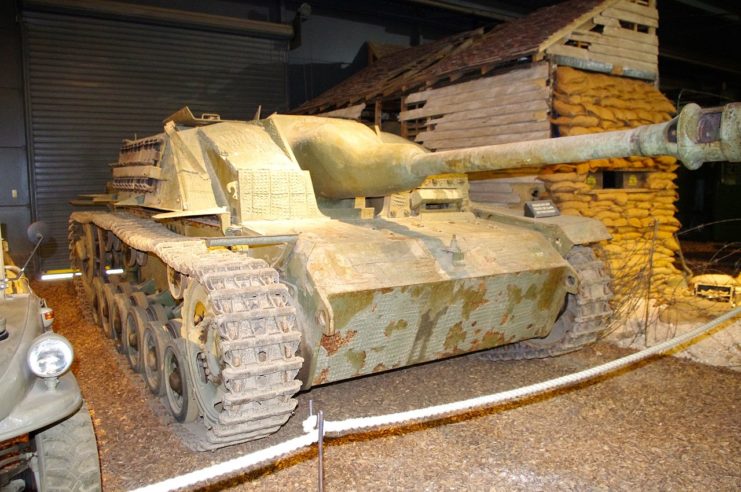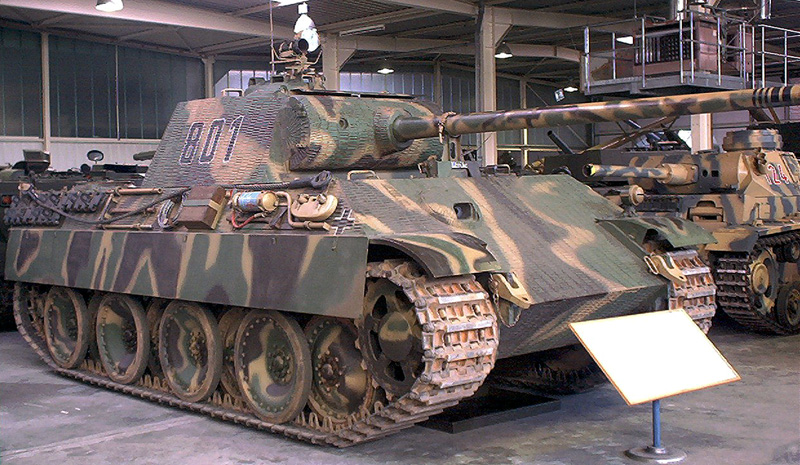When looking at German tanks from WWII, you may have noticed a strange texture covering most surfaces of their armor. Although this looks like some sort of interesting type of camouflage, it’s actually a special coating devised by the Germans to decrease the magnetic properties of a tank’s armor, to decrease a magnetic mine’s ability to stick to it. Named Zimmerit, the coating was difficult and time-consuming to apply. It ultimately proved to be unnecessary, as ironically, Germany was the only combatant in WWII to field magnetic mines in any appreciable amount.
In 1942 Germany introduced the Hafthohlladung anti-tank magnetic mine, which contained a shaped charge warhead and three strong magnets that held the device onto a tank’s armor. Its operation was simple: run-up to a tank, stick the mine on any magnetic surface, pull the safety pin and run for cover. The shaped charge then blasted a jet of molten metal through up to 140 mm of armor. The magnets ensured the device was the correct distance from the armor for the jet to form properly.
As it was magnetic, the device removed any advantages gained by armor angling. However, it was a dangerous job for the user, exposing them to enemy fire and the defenses of the tank itself.
The Germans feared that the weapon would soon be copied by the Allies and used against them, so they began working on countermeasures in case this happened.
Zimmerit

Zimmerit was Germany’s principal defense against magnetic mines. It served as a physical barrier between the armor and the magnetic mine to stop it from sticking, relying on the principle that magnetostatic fields decrease quickly with the cube of distance. Although it did not make the tank entirely anti-magnetic, it did significantly reduce a mine’s holding ability.
It was made from mixing pine crystals, benzene, barium sulfate, zinc sulfide, pine sawdust, PVA glue, ochre, and pebble dust. The putty-like mixture was applied to vehicles with a trowel, and each vehicle that received it had specific instructions on where exactly it should be applied. The layer of Zimmerit was 6 mm thick and had to dry to a rock-hard finish before the vehicle could be sent to the front.
To save time, it was mainly applied to the areas of a vehicle in reach of soldiers on foot. It started being applied to vehicles at factories in August of 1943. It could also be applied to vehicles that had already been deployed.
Workers applied a 2 mm layer of Zimmerit first, leaving it to dry for four hours. After this time had elapsed, a blowtorch was used to quickly burn off excess moisture and harden the coating. The final 4 mm of Zimmerit was then applied, patterned, and blowtorched.
The excess benzene often burst into flames when the blowtorch was used, making it a rather hazardous process for the workers. However, this was a small price to pay as Zimmerit took 8 days to dry naturally.
200 kg of Zimmerit was needed to coat a Tiger I.
The coating came in a number of different patterns, which usually varied between the factories that applied it. The most common pattern was ridging, but some vehicles, like the StuG-III, had Zimmerit applied in a waffle pattern.

The raised areas of the patterns increased the distance between the magnets and the armor without adding weight.
Flammability and Discontinuation

Zimmerit was used until September 1944, when rumors circulated that the coating could catch on fire when hit by incoming rounds. The Germans tested the theory and found it to be untrue, but Zimmerit was never ordered back into use. As it turned out, the Allies never used magnetic mines on any appreciable scale, meaning the coatings were never necessary.
At the time Germany was in desperate need of tanks, and adding days to a tank’s production time to protect it from a weapon that didn’t exist was simply unacceptable.
